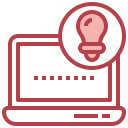
Introduction to Python Programming for Beginners
Python is a powerful, high-level programming language that is widely recognized for its simplicity and versatility. Designed to be easy to understand and write, Python is a preferred language for beginners who are just starting their journey into computer programming. This introduction will guide you through the basic concepts of Python, offering a strong foundation that you can build upon as you gain more experience. Whether you are looking to automate simple tasks, analyze data, or dive into web development, Python provides a friendly entry point with its readable syntax and vast community support.
What is Python?
History and Evolution
Python’s journey began in the late 1980s, with its first release in 1991. The language was designed to emphasize code readability and simplicity, helping both beginners and seasoned developers write concise and understandable code. Over the years, it has undergone significant improvements, including major releases like Python 2 and Python 3, each introducing new features and better performance. Today, Python continues to evolve, backed by a large community that contributes to its libraries and tools, ensuring that it remains at the forefront of modern programming languages.
Python’s Popularity
Python’s rise to prominence is owed to several key factors: an accessible syntax, vast libraries, and a supportive community. It consistently ranks among the top programming languages in various industry surveys and is the language of choice for leading companies in technology, finance, and education. Its accessibility makes it ideal for teaching programming fundamentals and problem-solving skills. Beginners appreciate how Python allows them to translate their ideas into code quickly, without the steep learning curve of other, more complex languages.
Versatility in Applications
One standout feature of Python is its remarkable versatility. It is not tied to a single domain but used in web development, machine learning, automation, scientific computing, and more. Libraries such as Django and Flask make building websites easier, while tools like NumPy and pandas empower data analysts and scientists. Python’s adaptability means that learning it opens doors to a wide range of fields, fostering a sense of empowerment and possibility for newcomers.
Setting Up Python
The first step in your Python journey involves downloading the official installer from Python’s website. The process is designed to be beginner-friendly, with stable releases available for Windows, macOS, and Linux. Most installations include IDLE, Python’s basic development environment. It’s important to select the latest version (usually Python 3) to ensure compatibility with tutorials and third-party libraries. The installation wizard guides users through each step, configuring environment variables if needed and ensuring Python runs smoothly on your system.

Python Syntax Basics
Indentation and Structure
Unlike many other programming languages that use braces or keywords to define blocks of code, Python uses indentation as its primary means of grouping statements. Consistent indentation is required, as improper indentation will cause errors. This approach enforces readable code and good habits from the start. Understanding and applying correct indentation ensures your code runs correctly and is easy for others to read and maintain, forming a crucial part of Python’s design philosophy.
Variables and Data Types
Variables in Python are names that store information—such as numbers, text, or more complex data structures. You do not need to declare a variable’s type; Python figures it out for you, which is known as dynamic typing. Understanding the basic data types—like integers, floats, strings, and booleans—is essential for performing operations and manipulating data. This flexible yet powerful approach makes experimenting and prototyping in Python particularly beginner-friendly.
Comments and Documentation
Comments are lines in your code that Python ignores, intended solely to help humans understand what is happening. In Python, comments start with the `
Writing Basic Python Programs
The print function is often a beginner’s first interaction with Python, used to display messages and results on the screen. Printing output serves not only as a way to check your code but also as a useful debugging tool. By experimenting with the print function, you’ll learn how to output strings, numbers, and even results of calculations, making your scripts interactive and easier to understand.
Previous
Next
Control Flow in Python
Conditional Statements
Conditional statements, like `if`, `elif`, and `else`, enable your program to make decisions and execute certain blocks of code only when specific conditions are met. By evaluating expressions and directing the flow of execution, you can create dynamic and responsive programs. Mastering conditionals allows you to introduce logic that tailors your program’s behavior to varying situations, forming the basis of almost all computational problem-solving.


Loops and Iteration
Loops are a fundamental programming concept that allow you to repeat actions multiple times. Python provides two main types: `for` loops and `while` loops. A `for` loop is typically used when you know how many times you want to repeat something, while a `while` loop continues as long as a specified condition remains true. Learning to work with loops is key to processing large amounts of data, automating repetitive tasks, and simplifying your code.
Previous
Next
Exploring Functions
In Python, you define a function using the `def` keyword, followed by the function’s name and parameters. Once defined, you can call that function as many times as needed throughout your program. Functions improve code organization and make it easier to break problems down into smaller, manageable pieces. By understanding how to define and invoke functions, you lay the groundwork for scalable and maintainable code.
Working with Data Structures
Lists and Their Uses
Lists are one of Python’s most versatile data structures, allowing you to store multiple items in a single variable. You can add, remove, or modify elements, iterate over them, and perform various useful operations. Lists are ideal for managing sequences of numbers, names, or almost any collection of similar data, making them one of the first and most important data structures to master as a beginner.
Dictionaries for Pairing Data
Dictionaries let you store data as key-value pairs, associating a unique key with a specific value. This structure excels at organizing and retrieving data quickly, such as looking up a phone number by name or storing configuration settings. Understanding dictionaries empowers you to manage and represent complex relationships between pieces of information, enhancing the capability of your programs to handle real-world problems.
Tuples and Sets
Tuples are immutable lists—once created, their contents cannot be changed. They’re useful for representing fixed collections of items, such as the coordinates of a point or the RGB values of a color. Sets, on the other hand, store unique items only, and are useful when you need to eliminate duplicates or perform mathematical set operations. Knowing when and how to use tuples and sets expands your ability to select the most appropriate data structure for each task.
